Breeds of cats and brindle cats and their content
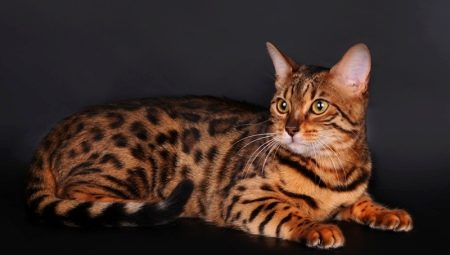
Tiger cats, or, more simply, striped, are especially popular. This is a natural pattern for wild cats: European forest, Pallas' cat, reed. This feature is fixed in some domestic breeds. Let's tell in more detail what kinds of "minke whales" exist and what are the features of caring for them.
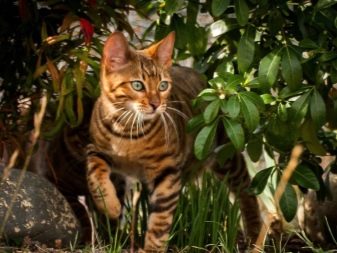
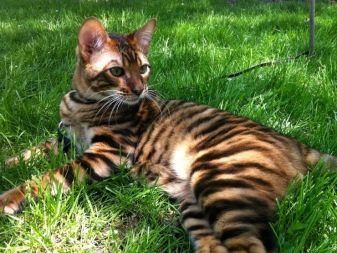
Peculiarities
Tabby cats can have different patterns and patterns, as well as different shades of coat. Some wear tiger-like coats, others leopard coats, and still others have a mixed pattern of pile. Some species of tiger cats have remained to live in the wild, but the main part has long been domesticated. There are also artificially created breeds that are quite expensive. To begin with, let's tell in a few words about wild animals that are the ancestors of domestic purrs.
There are three main subspecies of striped feral cats:
- northern tigerwho originally lived in Brazil, Venezuela;
- southern brindle, its main habitat is Brazil, Paraguay, Argentina, Uruguay;
- leopard spotted found mainly in Western Venezuela and Ecuador.
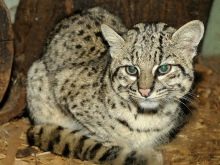
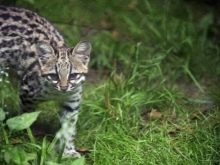
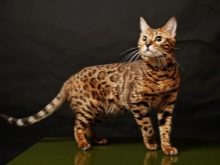
Some lovers of exotic animals try to have such wild cats as the serval and ocelot at home, but the oncilla, perhaps, has the most unusual appearance. And this is not surprising, because, unlike other cats, she does not have 38 chromosomes, but 36. She loves an active nightlife, and during the day she tries to sit out on elevated surfaces, from where she can assess the situation and keep it under control. In a word, you cannot grow a cute tame fluff from an oncilla, and it should be kept in a spacious aviary.
Their population is not large, the oncilla is recognized as a vulnerable species and is included in the CITES trade convention, so it is not easy to buy such a cat.
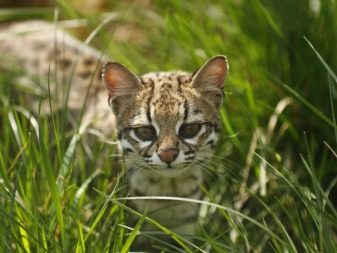

Domesticated and bred animals are much more suitable as favorite pets.
Among them there are also very unusual species that can become a source of pride for the owners, for example, minitigers (toygers), Bengalis and other tiger cats.
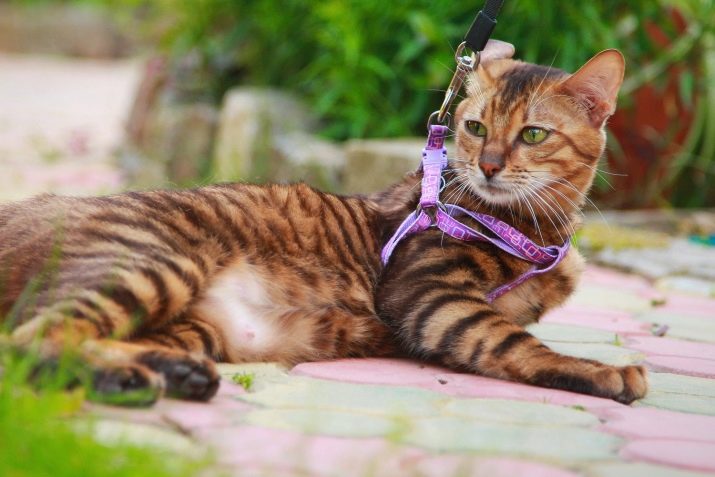
Description of breeds
Consider the types and breeds of tiger cats that take root well in the house.
Toyger
These rather large individuals, depending on gender, weigh 5-7 kg, have a muscular body, a long muzzle with a large nose, and rather small ears. Toyger color is as similar to tiger as possible. According to experts, six of them are hypoallergenic. They are very attached to their owners, love children and other animals and try to communicate with family members as much as possible, but in response to aggression they can stand up for themselves. Toygers shed little, so they do not leave hairs on clothes; sometimes it is enough to simply comb their fur for aesthetic purposes.
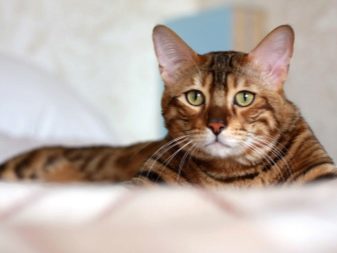
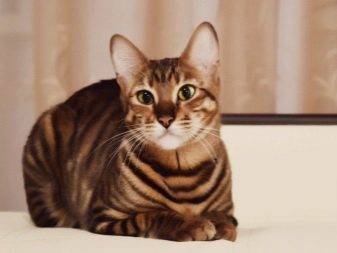
Bengal cat
Their hind legs are slightly larger than the front ones, so these cats look like leopards. Unlike toygers, their fur can have patterns not only of stripes, but also spots. The coat is golden, chocolate or transitional, the pads and tip of the tail are black. The average weight of Bengal cats is 5-7 kg.
They do not need combing, have a peaceful character, like to swim and walk on a leash with the owner.
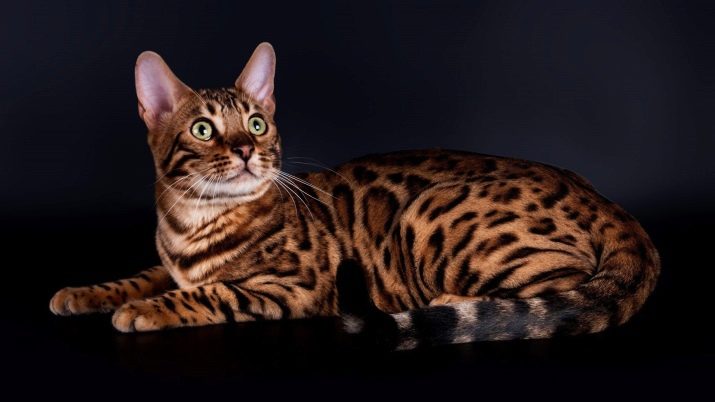
Sokoke
So called affectionate animals of medium size brown in color in different shades, from beige to chocolate. Moreover, their fur and body are decorated with black spots, which is a distinctive feature of the breed. They feel bad in the cold, so they like to stay at home. These cats are highly sensitive, may experience problems with the nervous system and even seizures.

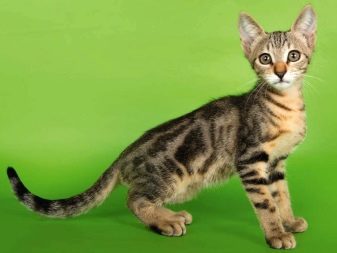
Egyptian mau
Cats of this breed have an elongated graceful body, they love games very much, so you should stock up on accessories to entertain such active animals. Despite such a lively disposition, sociability and love of hunting, they are often susceptible to diseases. They are large, luxurious animals with an elongated, slender body, slightly disproportionate.
Those who prefer silver or almost white tiger cats will find their own version among the Mau species; there are also golden striped and leopard cats among these beauties.

Usher's cat
It is considered the most expensive breed. Such a cat is affectionate and gentle, does not shed, does not cause allergies. Representatives of the Asher breed are rare animals, only about 100 kittens are born a year. They grow into large individuals that need expensive care.
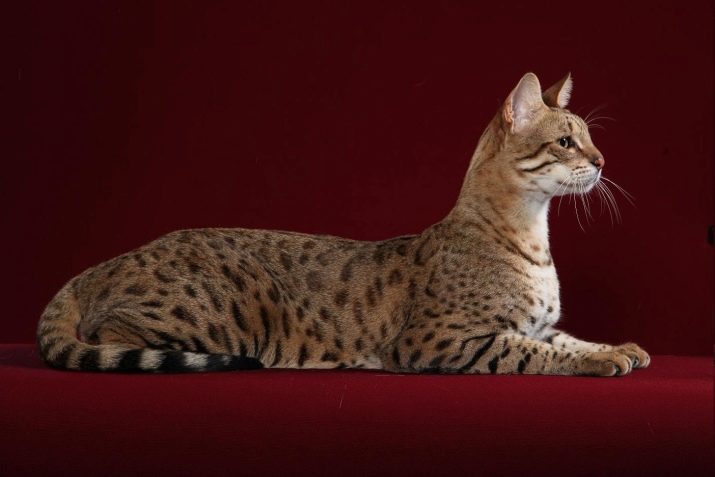
American shorthair
A distinctive feature is the large, wide-set eyes, which even in some animals are multi-colored. Ears are rounded or with small tassels. This cat does not have the graceful long body of the Bengal or Mau, but its developed torso and powerful strong paws cause no less admiration for its owners. Long-liver among cats - lives from 15 to 20 years.
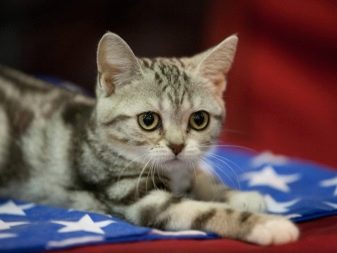
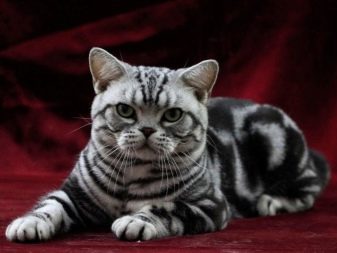
Munchkin short-footed
Today this breed bypasses many others in popularity, as its representatives have a truly unusual appearance and resemble dachshunds. It was officially approved relatively recently, in 1991. At any age, munchkins retain a cheerful disposition and love to play like kittens. They love to jump on different surfaces and climb up.
Because of their short limbs, they are advised to buy a short litter box.
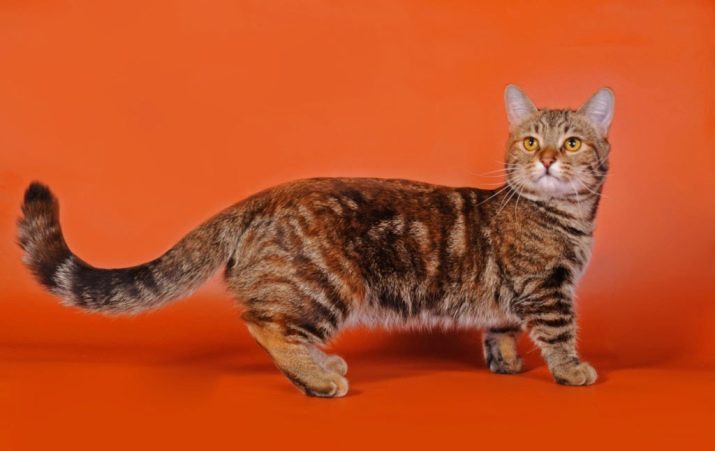
Siberian
These cats have been widely known in Russia for a long time. Large animals with impressive weight due to their long hair seem even fuller. Males often weigh 10 or even 12 kg. Among lovers of fluffy "minke whales" are in demand. They live long enough - up to 17 years.

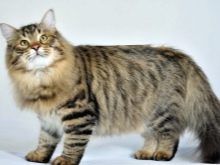
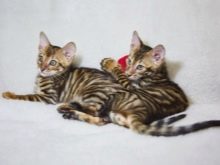
Conditions for keeping
Tiger cats, like other pets, require the care and attention of their owners. The living conditions for all domestic representatives of the feline family will be similar. It is good if the animal has its own corner in the house, where there will be items for games, a scratching post. Cats tend to remember places to eat and litter quickly. These pets are very clean, but most of them do not like water procedures, and experts still recommend that domestic cats be washed about once every 2 months.
Brushing the fur will also be useful.

What to feed?
Nutrition is fundamental to animal husbandry. The diet is worth select depending on the breed, taking into account the advice of specialists.
- Toyger has good health and experts do not give any special recommendations for feeding it. It is sometimes advised to offer solid food for the prevention of dental diseases.
- Bengal cats also in good health, their life expectancy is up to 15 years. Such expensive animals, as a rule, are fed either with high-quality natural products - fish, meat, or expensive cat food with vitamins.
- Tender sokoke it is advised to keep on a balanced feed with vitamin E and taurine, because their heart and metabolism can be weak.
- Mau often suffer from allergies, asthma and heart disorders, therefore they especially need special feed for this breed. If your cat has a tendency to these ailments, be sure to feed your pet correctly.
- Posh Usher it is recommended to give natural products - high-quality beef, poultry, ocean fish, and leave dry food as an addition to the rest of the diet.
- American shorthair cats are very fond of food, so that this does not lead to problems, it is advised to feed them twice a day, and not on demand. Do not forget to spoil them sometimes with dietary boiled meat, they love it very much.
- If you took up the maintenance of munchkins, then, depending on age, experts advise feeding them 2 to 5 times a day: kittens - more often, and older animals - less often. Babies who are only a few months old are advised to give cereals, dairy products, meat, and adults can be transferred to regular feed, wet or dry.
- Siberian cats can be very large, and it is important to correctly calculate the amount of food. Usually, 30-60 grams of feed are given per 1 kg of weight. To keep the coat looking beautiful and shiny, a diet containing 70% protein is recommended for up to 3 years.
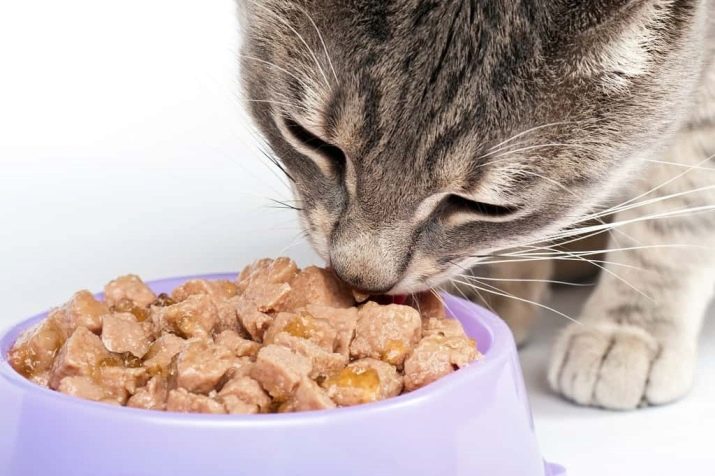
Breeding
If we talk about breeding Siberian cats, then it is quite easy to acquire them in nurseries or from breeders. As for the overseas beauties, some breeds can be found only in single nurseries, and a considerable sum will have to be paid for such exotics.
Toygers cost from 1 to 3 thousand dollars, an individual capable of giving birth to kittens will cost twice as much. They can be bought in official nurseries in Moscow, St. Petersburg, Zelenograd. Mau is not a cheap breed, it stands in the official Moscow nursery up to 100 thousand. Sokoke who need some pretty painstaking care due to health problems can get by at the same price.
The most expensive are Asher's cats, the price for them can reach one and a half million rubles or 20-30 thousand dollars if it is a kitten with documents.

The choice of a cat depends on your wishes and needs. Pedigree animals become a source of pride for many, but they often really need special care and expensive specialized feeds, since they do not have such good health as ordinary "Murki" living in our country for generations. You need to weigh your capabilities in order to provide the thoroughbred pet with proper conditions.
An overview of the Bengal cat is presented in the following video.
































